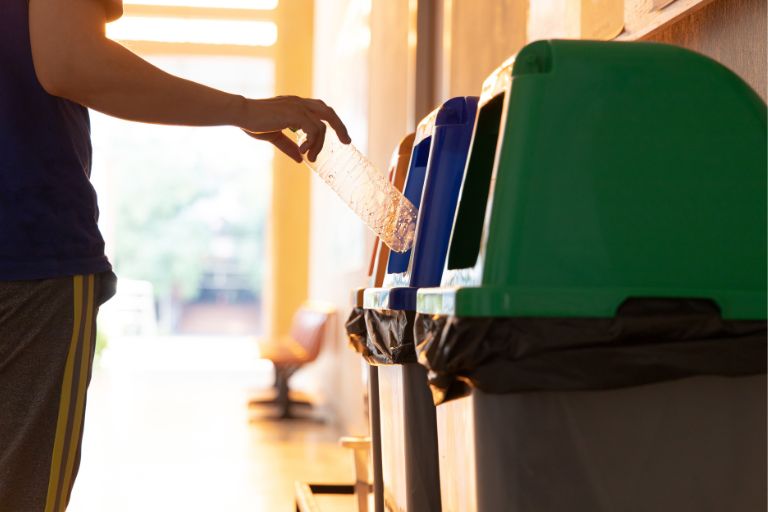Blog
What’s the Real Cost of Contamination?
by Routeware Team • July 28, 2025

Recycling contamination costs the U.S. more than $3.5 billion every year.
But what does that really mean for your city, your fleet—and your bottom line?
Contamination happens when non-recyclable items end up in the recycling bin: greasy pizza boxes, plastic bags, garden hoses, Styrofoam, or even dirty recyclables like unwashed peanut butter jars. When these items mix with clean recyclables, they lower the quality of the material and can spoil entire loads, sending them straight to the landfill.
It’s Not Just a Messy Bin. It’s a Multi-Billion-Dollar Problem.
When contamination enters the waste stream:
- Recyclables get rejected at materials recovery facilities (MRFs)
- Processing costs rise due to additional labor and equipment damage
- Haulers face fines and decreased profitability
- Municipalities pay more in tipping fees
- Environmental progress stalls as more material is landfilled
The National Waste & Recycling Association estimates that recycling contamination adds more than $3.5 billion in unnecessary costs to the U.S. waste system annually. That’s billions lost, not to mention the missed opportunity to recover valuable materials.
Estimated Annual Financial Impact of Recycling Contamination in the U.S.
| Cost Category | Estimated Annual Impact (USD) | Why It Happens |
|---|---|---|
| Sorting contaminated materials | ~$1.2 billion | Manual sorting labor due to improper recycling |
| Reduced material value | ~$1.1 billion | Contaminated recyclables fetch lower prices |
| Landfilling rejected loads | ~$800 million | High contamination causes rejection |
| Equipment damage & maintenance | ~$500 million | Non-recyclables (e.g. batteries, plastic bags) |
| Fire & safety incidents | ~$100 million | Lithium batteries & e-waste causing fires |
The Root of the Problem: Awareness + Accountability
Most contamination is caused by simple confusion or carelessness. Residents want to do the right thing, but rules vary from place to place—and outdated education methods don’t keep up with changing standards.
To reduce contamination, haulers and municipalities need tools that combine real-time data, proactive education, and automated enforcement.
How Routeware Helps Reduce Contamination
At Routeware, we equip smart cities and modern fleets with solutions that drive accountability and reduce contamination:
- Smart cameras & sensors flag contamination at the source during pickup
- Digital feedback loops let residents know when and why their bin was identified as “contaminated”
- Automated reporting gives cities the data they need to educate and improve contamination rates
- Behavioral nudges help change habits over time, leading to cleaner loads
- Digital billing systems give fleets the ability to fine repeat contamination offenders
Routeware’s digital tools make it easier for waste haulers and municipalities to connect with the people they serve. Features like the Waste Wizard help residents quickly find out how to dispose of common (and not-so-common) items properly, cutting down on contamination and boosting recycling rates.
The customer education portal goes a step further. With branded portals, mobile apps, service alerts, and personalized calendars, you can keep residents informed, reduce inbound calls, and improve compliance. It’s all about creating a more seamless, transparent, and cost-effective experience for your operation and your community.
With the right tech, contamination can be identified in real time, education can be personalized, and recycling systems can become more efficient and more sustainable.
Take the First Step
Recycling contamination is costing your city more than you think. It’s driving up operational costs, increasing emissions, and undermining public trust in sustainability programs.
Let’s fix it—together.
👉 Learn how Routeware helps communities reduce contamination
👉 Download our Smart City Playbook